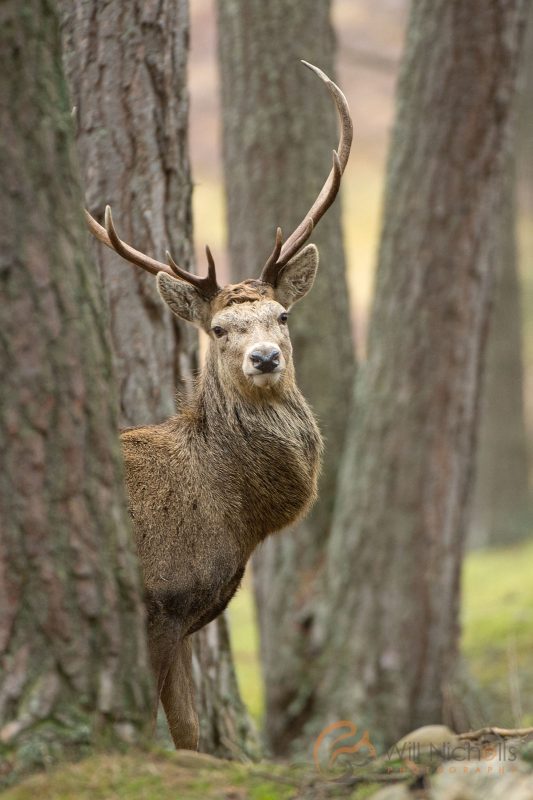8 Tips for Approaching Animals Without Being Noticed

One of the most challenging aspects of wildlife photography is getting close to your subject. The act of moving stealthily and stalking up to wildlife is known as “fieldcraft,” and it comes with experience of being outdoors and learning from your mistakes. Approaching animals is a marathon, not a sprint, and fast approaches will result in clumsy errors that cause your target to sprint off into the distance.
You might opt for a super-telephoto lens on a crop sensor camera to give you that extra reach, but I’ve spent almost my entire 11-year career shooting with no more than 400mm on a full-frame sensor. The answer, in my opinion, is just to get closer to your subject if you find that you can’t fill the frame with them (and want to). But how exactly do you do that? It’s easy to say “get closer,” but some animals have spent thousands of years evolving senses that allow them to detect predators. Deer, for example, have excellent hearing and will leave you in their dust at the sound of a twig snapping.


Here are some top tips you can use to get closer to wildlife for photographic purposes.
#1 Move Whenever an Animal is Feeding
If you’re stalking close to a mammal, chances are that they are probably feeding. Begin your approach whenever the animal’s head is down, focused on its natural activities. Never take your eyes off of your target, and when you see them raise their heads you must freeze. Don’t necessarily drop down into cover if they’ve already locked onto you, but remain still until they look down again. It may help to tilt your head to the side, showing just one eye towards the animal in question. This is because predators will look at an animal with two forward-facing eyes – showing just one eye may make you look more like a prey animal, and less of a threat. This is just a hypothesis of mine, though, and may not make any difference – but it can’t hurt to try!
Making a slow, but steady, approach like this will get you closer to your target animal without spooking them and sending them running for the hills. Sometimes you’ll find they run off anyway, but certain individuals will react differently.
#2 Don’t Approach from Above
I’ve found success approaching animals on their level, or from below, more than I have approaching from above. For example, if an animal is on a hillside I will avoid moving towards them from a position higher than them. I think this reduces the feeling that they are being preyed upon, and makes you seem less of a threat.

#3 Don’t Approach in a Straight Line
Sometimes it can be tempting to bee-line straight for your subject, but this makes it obvious that they are your target. Animals move past each other all the time in the wild, but it’s usually predators that go straight towards their prey. Approach in more of a zig-zag, which goes back to the idea mentioned in Step 1 of showing one eye towards your target.
#4 Be as Silent as Possible
It goes without saying that you should avoid treading on twigs, crunchy leaves, and other potentially loud objects. These sounds are unnatural and will immediately give away your position. However, you should also think about the clothes you are wearing; in particular the material. Waterproof clothing and jeans can rub as you move, creating unwanted noises. Wearing other, more lightweight materials can keep you stealthy.
#5 Think About the Wind Direction
If you are approaching upwind of an animal, you’ll have your scent blowing straight towards them. This is a huge giveaway, and it’s doubtful you’ll get anywhere near an animal if you fill their nostrils with aftershave or perfume! Even the natural scent of a person is too much, though, so it is best to approach downwind. This means that the wind is blowing into your face, or across you, rather than coming from behind you and blowing towards the subject.

#6 You Don’t Need Camouflage
Fieldcraft doesn’t mean kitting yourself up with a ghillie suit; typical “army camouflage” is not necessary for getting near to animals. However, think about the colours you are wearing. Bright pink or white is not a good choice, for example. Stick to muted, natural colours. If approaching a very wary animal, such as a deer, I will sometimes wear a balaclava to hide my face – white skin is like a shining beacon showing where I am. The same goes for my hands; thin gloves can keep these concealed.
#7 Don’t Rush
All of your movements should be slow. If you’re in position and are moving to take a photo, lift your camera slowly and steadily. Don’t get overexcited and unzip your camera bag in a rush. This sudden movement will spook your subject. Instead, remain in position and let them get used to you for a moment. Then get out your camera, and start taking pictures.

#8 Burst Mode Isn’t Always the Best Choice
Having your camera in burst mode isn’t necessarily the best option when you’re photographing nervous or sensitive animals. If you’re using a mirrorless camera then you’re probably okay, but DSLR users will find that the sound of the shutter firing rapidly is too loud. You wouldn’t want to continually and rapidly snap twigs, so be selective with your shots. If your camera has a quiet mode, then employ this to reduce your impact.
In Conclusion
Remember, whatever you do with your wildlife photography should always adhere to good ethical practices. It’s important not to encroach on an animal if it’s going to cause undue stress, especially with regards to young in the breeding season. Don’t get too close to individuals with young, as separating a mother from its offspring can be fatal to the unprotected baby.






